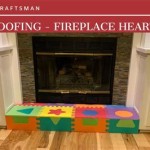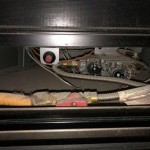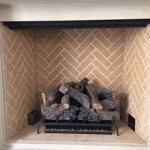Understanding Heatilator Gas Fireplaces: Features, Benefits, and Considerations
Heatilator gas fireplaces represent a significant segment of the residential and commercial heating market. They offer a blend of aesthetic appeal, convenience, and energy efficiency that appeals to a broad spectrum of consumers. This article provides a comprehensive overview of Heatilator gas fireplaces, examining their key features, benefits, operational considerations, and maintenance requirements.
Heatilator, as a brand, has a history rooted in providing innovative heating solutions. Over time, the company has adapted to evolving consumer demands and technological advancements, resulting in a diverse product line featuring various gas fireplace models. These models are designed to cater to different installation requirements, aesthetic preferences, and heating needs, ensuring that customers have a range of options to choose from.
The core appeal of a Heatilator gas fireplace lies in its simplified operation compared to traditional wood-burning fireplaces. Gas fireplaces eliminate the need for wood sourcing, storage, and the labor-intensive process of building and maintaining a fire. With a simple switch or remote control, users can initiate a fire, adjusting the flame height and heat output as desired. This ease of use makes them particularly attractive in contemporary lifestyles where convenience is highly valued.
Beyond convenience, Heatilator gas fireplaces offer enhanced energy efficiency. Modern models are designed with advanced burner technology and sealed combustion systems, maximizing heat transfer and minimizing heat loss through the chimney. This results in lower heating costs compared to conventional heating methods, particularly when used as a supplemental heat source in specific areas of a home or building.
Safety is another crucial aspect of Heatilator gas fireplaces. These fireplaces are equipped with safety features such as oxygen depletion sensors (ODS) and automatic shut-off mechanisms. ODS sensors monitor the oxygen levels in the room and automatically shut off the gas supply if the oxygen level drops below a safe threshold, preventing carbon monoxide poisoning. Automatic shut-off mechanisms also activate in case of malfunctions or gas leaks, further enhancing safety.
The design of Heatilator gas fireplaces also contributes to their popularity. They are available in a wide range of styles, from traditional to contemporary, allowing homeowners to seamlessly integrate them into their existing décor. Options include various log sets, firebox interiors, and surround materials, providing opportunities for customization and personalization. The visual appeal of a flickering flame, coupled with the radiant heat, creates a cozy and inviting atmosphere in any living space.
Installation is a key factor to consider when choosing a Heatilator gas fireplace. Professional installation is highly recommended to ensure that the fireplace is properly connected to the gas supply and venting system. Adherence to local building codes and manufacturer specifications is essential for safe and efficient operation. Proper installation also helps to prevent potential hazards such as gas leaks or carbon monoxide exposure.
Key Point 1: Advantages of Gas Fireplaces Over Traditional Wood-Burning Fireplaces
Heatilator gas fireplaces present several distinct advantages over traditional wood-burning fireplaces. These advantages contribute to their growing popularity and adoption in residential and commercial settings. Key distinctions include convenience, efficiency, and environmental impact.
Traditional wood-burning fireplaces require a significant amount of preparation and maintenance. Sourcing, chopping, and storing firewood are time-consuming and physically demanding tasks. Building and tending the fire requires constant attention, and cleaning up ashes and soot after each use can be messy and inconvenient. Gas fireplaces, on the other hand, eliminate these hassles. With a simple push of a button or flick of a switch, a gas fire can be ignited and extinguished, allowing users to enjoy the warmth and ambiance of a fire without the associated labor.
Energy efficiency is another significant advantage. Wood-burning fireplaces often lose a substantial amount of heat through the chimney, resulting in a net energy loss. Gas fireplaces, particularly those with sealed combustion systems, are designed to maximize heat transfer and minimize heat loss. They can be used as a supplemental heat source to warm specific areas of a home, reducing the reliance on central heating systems and lowering energy bills. The ability to control the flame height and heat output also allows users to fine-tune the heating level to their specific needs, further enhancing energy efficiency.
Environmental impact is also a critical consideration. Wood-burning fireplaces release smoke, particulate matter, and other pollutants into the atmosphere, contributing to air pollution and potential health hazards. Gas fireplaces burn cleaner than wood, producing fewer emissions and reducing the environmental footprint. While gas fireplaces still release some emissions, they are significantly lower than those produced by wood-burning fireplaces. The use of natural gas or propane as fuel also reduces the reliance on deforestation and the depletion of natural resources associated with wood harvesting.
Cost is also a factor. While initial installation costs might be higher for a gas fireplace, the long-term operational costs can be lower due to the reduced need for firewood and the increased energy efficiency. The cost of firewood can fluctuate depending on the region and availability, whereas the cost of natural gas or propane is often more predictable. Regular maintenance of a wood-burning fireplace, including chimney cleaning and repairs, can also add to the overall cost.
Key Point 2: Safety Features and Operational Considerations
Safety is paramount in the design and operation of Heatilator gas fireplaces. These fireplaces are equipped with various safety features to prevent accidents and ensure the well-being of users. Understanding these features and adhering to proper operational guidelines is crucial for safe and reliable performance.
Oxygen Depletion Sensors (ODS) are a standard safety feature in most Heatilator gas fireplaces. These sensors continuously monitor the oxygen levels in the room. If the oxygen level drops below a predetermined threshold, typically due to inadequate ventilation or a malfunctioning burner, the ODS sensor will automatically shut off the gas supply to the fireplace. This prevents the buildup of carbon monoxide, a colorless and odorless gas that can be fatal if inhaled in high concentrations. Regular inspection and maintenance of the ODS sensor are essential to ensure its proper functioning.
Automatic shut-off mechanisms are another important safety feature. These mechanisms are designed to shut off the gas supply in case of a malfunction, such as a gas leak or a pilot light failure. Some models also include tilt sensors that will automatically shut off the fireplace if it is accidentally knocked over or tilted at an excessive angle. These safety features provide an extra layer of protection against potential hazards.
Proper venting is crucial for the safe operation of a gas fireplace. Gas fireplaces require a properly installed and maintained venting system to exhaust combustion byproducts, such as carbon dioxide and water vapor, to the outside. The venting system must be compatible with the fireplace model and installed according to manufacturer specifications and local building codes. Regular inspection of the venting system is essential to ensure that it is free from obstructions, such as bird nests or debris, which can impede airflow and create a fire hazard.
Professional installation is highly recommended for Heatilator gas fireplaces. A qualified technician will ensure that the fireplace is properly connected to the gas supply and venting system, and that all safety features are functioning correctly. They will also be able to provide instructions on the safe operation and maintenance of the fireplace. Attempting to install a gas fireplace without proper training and expertise can be dangerous and may void the warranty.
Regular maintenance is also essential for safe and reliable operation. This includes cleaning the burner and pilot light, inspecting the venting system, and checking the gas connections for leaks. It is recommended to schedule an annual inspection and maintenance service by a qualified technician to ensure that the fireplace is operating safely and efficiently. Following the manufacturer's instructions for operation and maintenance is crucial for prolonging the lifespan of the fireplace and preventing potential problems.
Key Point 3: Design Options and Customization Possibilities
Heatilator gas fireplaces offer a wide range of design options and customization possibilities, allowing homeowners to create a fireplace that seamlessly integrates into their existing décor and reflects their personal style. From traditional to contemporary designs, there are options to suit virtually any aesthetic preference.
Log sets are a key element in the visual appeal of a gas fireplace. Heatilator offers a variety of log sets, ranging from realistic-looking artificial logs to more abstract and contemporary designs. The log sets are typically made from ceramic or refractory materials that can withstand high temperatures. They are designed to mimic the look of natural wood, with intricate details and realistic textures. Some log sets also include glowing embers that further enhance the ambiance of the fire.
Firebox interiors provide another opportunity for customization. Different firebox interiors can create different visual effects and enhance the overall aesthetic of the fireplace. Options include brick liners, ceramic panels, and reflective glass panels. Brick liners can add a traditional and rustic touch, while ceramic panels can provide a more contemporary and clean look. Reflective glass panels can create a sense of depth and amplify the light from the flames, creating a dramatic and eye-catching effect.
Surrounds and mantels are also important design elements. The surround is the area immediately surrounding the fireplace opening, while the mantel is a shelf-like structure above the fireplace. Surrounds and mantels can be made from a variety of materials, including wood, stone, metal, and tile. The choice of material and design can significantly impact the overall look and feel of the fireplace. A traditional wood mantel can add warmth and character to a room, while a sleek metal surround can create a more modern and minimalist look.
Flame presentation is another factor to consider. Heatilator gas fireplaces offer different flame patterns and flame heights, allowing users to customize the visual appearance of the fire. Some models feature a dancing flame effect, while others offer a more steady and consistent flame. The ability to adjust the flame height allows users to control the heat output and create the desired ambiance. The flame presentation can also be enhanced by adding decorative media, such as glass beads or stones, to the firebox.
Remote controls and smart home integration provide additional customization options. Many Heatilator gas fireplaces come with remote controls that allow users to adjust the flame height, heat output, and other settings from the comfort of their couch. Some models also offer smart home integration, allowing users to control the fireplace using their smartphone or other smart devices. This allows for convenient and personalized control of the fireplace, enhancing the overall user experience.

Heatilator Heirloom Gas Fireplace Fireside Hearth Home

Heatilator Gdst4336i Weiss Johnson Fireplaces

Heatilator Gas Electric Fireplaces And Inserts Reno Nv

Heatilator Novus Nxt Gas Fireplace Best Fire

Gb4336 Geneva 36 Bv Gas Fireplace Heatilatorparts Com

Heatilator Crave Gas Fireplace Fireside Hearth Home

Heatilator Legacy Trueview Gas Fireplace Angerstein S Builder Supply Lighting Design Center

Heatilator Gdst3831i Weiss Johnson Fireplaces

Heatilator Heirloom 42 Traditional Direct Vent Natural Gas Fireplace Us

Gas Fireplaces Heatilator Mountain West S








